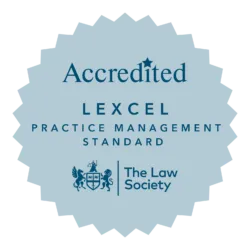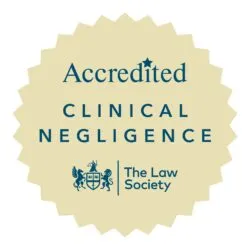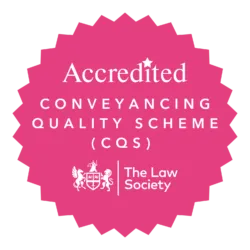
Asbestos raises its ugly head in schools
As many as 75% of schools still contain asbestos – but does it remain dangerous if \’properly managed\’?
Reproduced with kind permission of Guardian Media Group.
Headteacher Estelle O\’Hara knows only too well how school life can be turned upside down when asbestos has to be removed. Maintenance work on the roof at Poppleton Ousebank primary school, York, became a protracted saga as workmen took away all the asbestos ceiling tiles. It meant closure of the lower school for half the autumn term, with children decamping to temporary classrooms.
Removing the asbestos to comply with health and safety regulations cost York City Council almost £34,000. Moreover, furnishings, soft toys and topic books representing years of hard work all had to be destroyed – \”thousands of pounds\’ worth of stuff,\” according to O\’Hara.
Staff knew the building contained asbestos, and its removal was properly managed. \”But it has been an upheaval,\” says O\’Hara. \”We were lucky we had understanding parents, and kept them informed at all times.\” No children were exposed to the dust, which was discovered soon after roof repair work began during last year\’s summer holiday.
The presence of asbestos in schools is giving rise to new concerns as cases of death from mesothelioma, a rare form of cancer, seem to be rising steadily. The disease, known to be caused by asbestos, often takes decades to manifest itself.
The Health and Safety Executive (HSE) states that if asbestos is \”properly managed, remains undamaged and undisturbed, then its presence alone should not be a cause for concern\”.
But some scientists are now at odds with the HSE over what should be done where asbestos remains in public buildings. Asbestos is thought to have been used in around 75% of the country\’s schools. Successive governments have rejected calls for a national survey and risk assessment of schools\’ asbestos management plans.
Last year, when in opposition, the current schools minister, Nick Gibb, requested a national audit to determine the extent, type and condition of asbestos in school buildings; and to establish standards of asbestos management.
Earlier this year, the HSE undertook a survey, which revealed that 42 local authorities lacked a management plan, as required by the Control of Asbestos Regulations 2006. The worst offenders have since received enforcement notices designed to improve training and ensure that contractors working in schools know about the location and state of asbestos.
The Department for Education (DfE) says the HSE action will \”ensure local authorities are taking their responsibilities seriously … of managing asbestos\”. A spokesman says: \”The government provides … funding … to ensure school buildings are maintained … so there is no excuse for any mismanagement.\”
Last month, the HSE began a survey of 162 of the estimated 6,000 schools that are outside local authority control, including academies. These schools, or their governing bodies, are responsible for asbestos management under the 2006 regulations. The schools surveyed have been selected randomly. The work is due to be completed by March 2011.
The policy of who will be responsible for asbestos management in free schools – which may open up in former offices – \”is still evolving\”, says the DfE spokesman. \”With the business case they put forward, we\’ll look in detail at whether the buildings are suitable and contain asbestos, and whether they\’ll be cost-effective.\” Free schools would be able to call on the £15.8bn capital budget allocated to cover repairs and maintenance, the spokesman added.
Ministerial responsibility for this complex territory recently passed to Lord Hill, who met campaigners to discuss their concerns. \”He assured us he\’d take account of any additional evidence,\” says Michael Lees, who oversees the campaign group Asbestos in Schools (AiS).
Jim Sheridan MP, who chairs the asbestos subcommittee of the parliamentary group on occupational health and safety, believes all asbestos should be removed from schools. \”We will be writing to Lord Hill asking what\’s he going to do,\” he says. \”We\’ll also write to the chair of the education select committee [Graham Stuart] asking for an inquiry to check the level of asbestos in schools. I\’ve been to too many funerals of people who have died from mesothelioma to buy the line that if you don\’t disturb it, it\’s OK.\”
Meanwhile, AiS and school trade unions question the rigour and scope of HSE\’s recent survey. They, too, want asbestos removed from all schools.
Last month, the Joint Union Asbestos Committee (Juac) launched its own survey of school management plans following a report from the Asbestos Testing and Consultancy Association (Atac) in February. Atac conducted an assessment of volunteer schools and found \”widespread failings\”. Some schools \”had no knowledge of asbestos management\” and were \”not complying with their legal duty\”, it said.
Juac says the numbers of people who have suffered ill health or died as a result of exposure is \”unacceptably high\”. \”The latency [time lag] before asbestos-related illness develops can be many years,\” it says. \”It\’s possible the number of people affected in schools is much higher than currently thought. Pupils in particular are likely to go undiagnosed for many years, and any effects are unlikely to be recognised as connected to exposure in school.\”
The apprehension has been sharpened by the case of Dianne Willmore, exposed to asbestos whilst a pupil at Bowring comprehensive school, Merseyside, during the 1970s, and diagnosed with mesothelioma in March 2007 aged 46. She died last year, having been awarded £240,000 compensation at Liverpool High Court, which ruled that Knowsley council had been negligent. The council is fighting the outcome in the Supreme Court. Judgment is expected early in the new year.
The HSE\’s most recent statistics show an inexorable rise in the annual rate of all mesothelioma deaths: from 155 in 1968 to 2,250 in 2008. Those of teachers and lecturers were 182 between 1980 and 2000 – almost 10 a year – but from 2002-2005 rose to 75, ie 25 a year. HSE insists that teachers \”don\’t stand out as a high-risk group\”. But Dr Robin Howie, a member of Watch, the government\’s advisory committee on science, disagrees.
Howie says 90% of all mesothelioma deaths were in people who had \”identifiable or presumed occupational exposure\” to asbestos, such as former construction workers and laggers. His statistical analysis has concluded that mesothelioma rates in male and female classroom personnel are, respectively, 10 and three times higher than expected in matched populations not exposed to asbestos.
Dr Jeremy Steele, co-director of Bart\’s hospital mesothelioma research team and a specialist in lung cancer, claims that \”most [scientific] opinion believes there is a risk of mesothelioma … even from concealed asbestos\”.
\”With false ceilings, if you have panels that aren\’t installed tightly, they give, and asbestos dust can egress into the main space,\” he says. \”I can\’t see any reason not to have a national survey and a risk assessment. But the consequences [in terms of rebuilding] could be very profound.\”
There are, says Steele, different levels of susceptibility to contracting mesothelioma, and for some people exposure even to a small sample of dust is potentially lethal. \”But we don\’t know how many and there\’s no way of identifying them. The problem is there is no safe level of asbestos.\”
The HSE does not dispute expert scientific opinion that there is no threshold level of exposure – \”by which we mean the number of fibres breathed in\” – below which any environment can be judged risk-free. \”However, research shows it\’s the degree of exposure that\’s important in determining the extent of risk,\” it adds.
The regulations of 2006 set an airborne \”control limit\” and a short-term exposure limit \”designed … to protect the health of people at work\”. \”But these do not represent \’safe\’ levels HSE is prepared to accommodate – HSE would expect ambient airborne exposure levels in a building containing asbestos to be substantially below the control limit,\” a spokeswoman said.
But Howie points to a review carried out in 1997 by the Medical Research Council Institute for Environment and Health, which concluded that even in buildings with asbestos in good condition, airborne fibre concentrations could be up to 0.001fibres/ml. Campaigners are adamant that exposure at any level – even a seemingly low one – is potentially lethal.
\”HSE\’s reported assurance that asbestos in good condition in buildings poses \’absolutely no risk\’ is scientifically incorrect,\” says Howie. \”All asbestos in schools, specifically including those in good condition, can constitute a risk.\”
From The Guardian.










